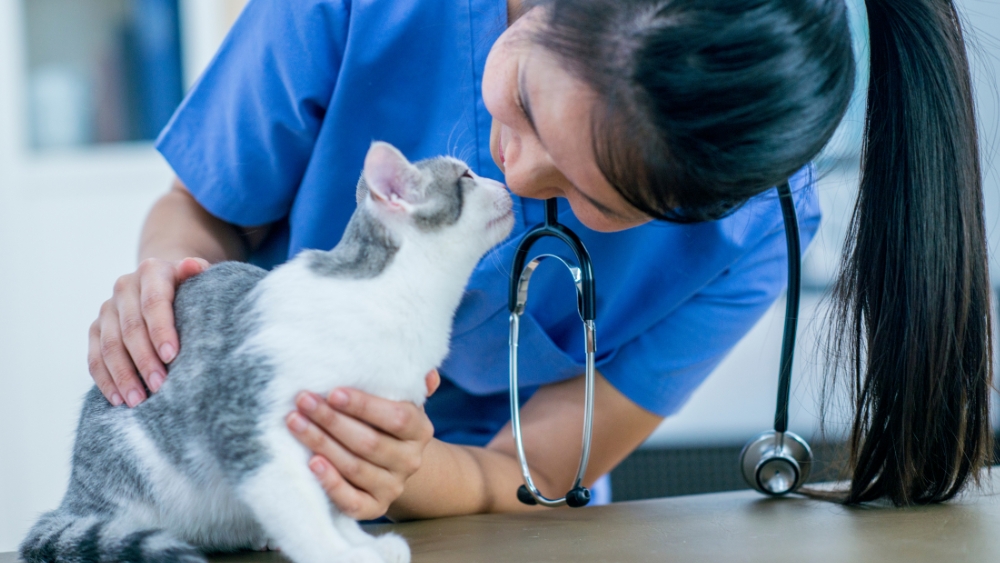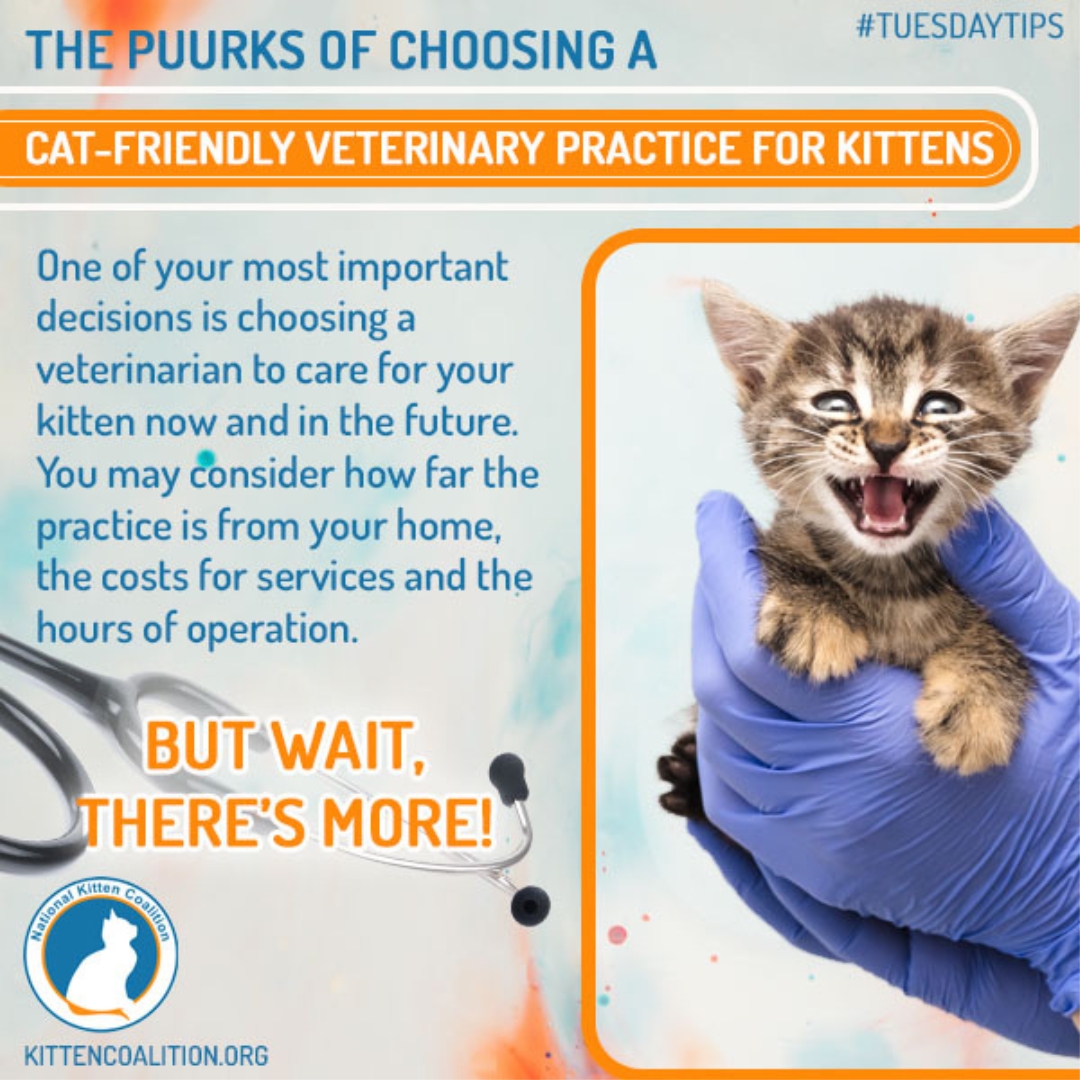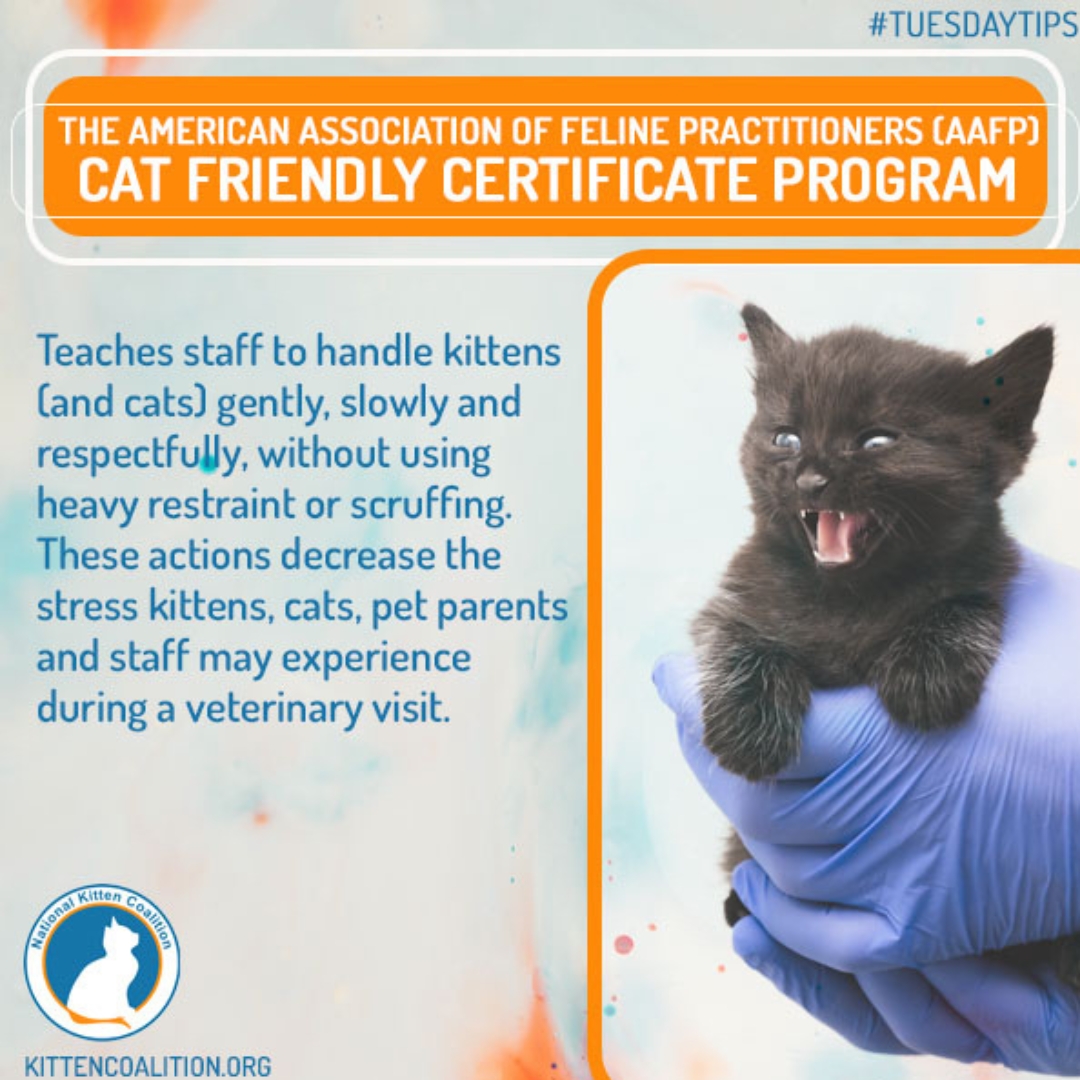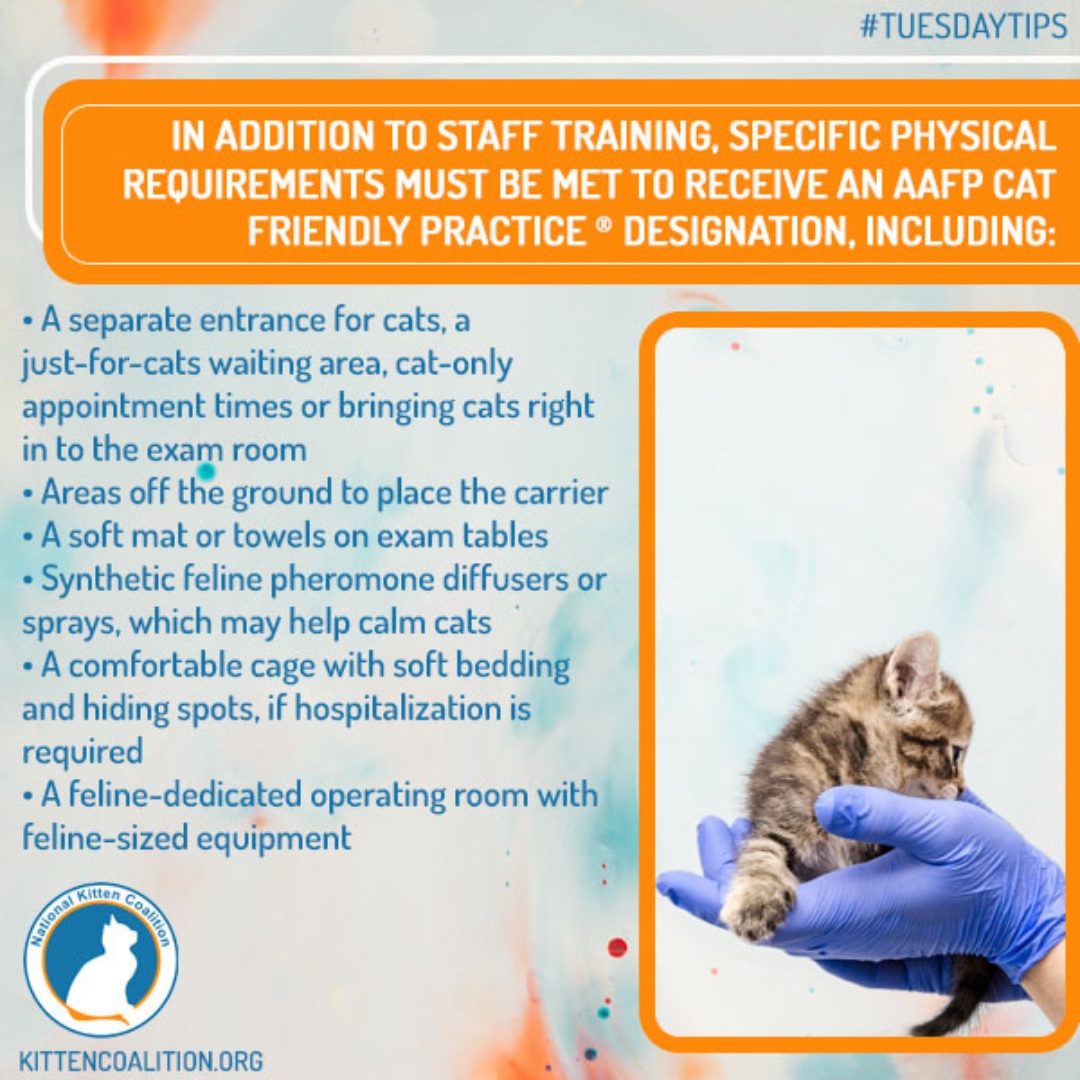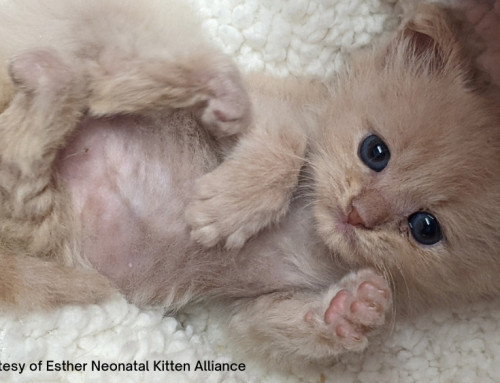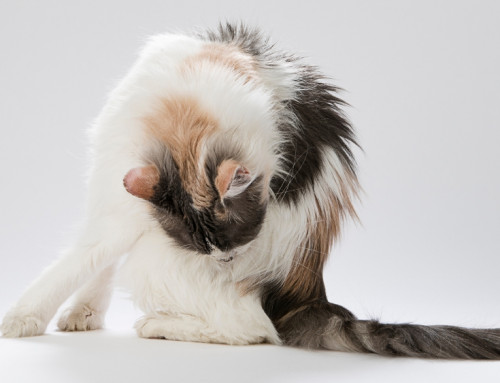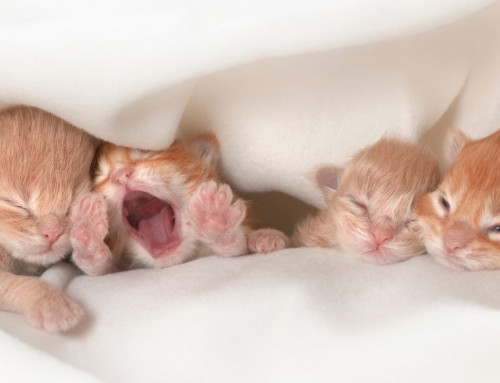Share this resource or email it to a friend!
Congratulations! You’ve brought a new kitten or kittens into your home. You may think that your indoor pet is free from the risk of disease or injury, but anything can happen. In addition, felines are adept at hiding illness, and you may miss the subtle signs of sickness.
There’s a lot to know about sharing your home with a kitten. One of the most important decisions you will make is choosing a veterinarian to provide care for your kitten and during his entire lifetime. Preventive medicine is the best medicine and requires regular exams in addition to the multiple preventive healthcare visits for a kitten.
Unfortunately, cats visit the veterinarian much less frequently than dogs, largely because of the stress of getting kittens and cats into a carrier, hearing their mournful cries in the car and seeing their fear at the veterinary practice.
Some things to consider when choosing a veterinarian include how far the practice is from your home, the costs for services, the hours of operation and more.
Did you know that the American Association of Feline Practitioners (AAFP) Cat Friendly Certificate Program provides specialized educational training in cat friendly techniques to veterinary professionals? The AAFP also provides Cat Friendly Practice® Program designation to veterinary clinics and hospitals that meet additional criteria to make the veterinary experience less stressful for your kitten and you. That’s pawesome! Here’s how it works.
Everyone who has gone through the Cat Friendly Certificate Program has learned how to handle kittens (and cats) gently, slowly and respectfully, without using heavy restraint or scruffing. These actions and speaking softly, can tremendously decrease the stress and fear that felines may experience while visiting the veterinarian. Pet parents and staff may also experience less stress.
Veterinarians and staff use Feline Friendly Handling Guidelines and Nursing Guidelines to help keep kittens calm and allow for a thorough exam. Parts of the exam may be done with the kitten in his carrier, which, although you may have struggled to put him in it, has now become his safe place. Alternatively, exams may be performed on the floor, a bench, under a blanket or on a lap to make kittens as comfortable as possible.
Staff is trained to identify subtle signs of sickness and pain in felines, and the parts of the exam that might be more stressful will be done at the end. All exams must include a behavior, nutrition and pain assessment, and vaccinations are recommended based on the AAFP Feline Vaccination Guidelines. AAFP Cat Friendly Practices® are required to renew their designation every 3 years. What’s more, at least one veterinarian in the practice must obtain 20 hours of American Association of Veterinary State Boards’ Registry of Approved Continuing Education (RACE), or equivalent based on location, every two years, and 10 hours must be in feline medicine and surgery.
In addition to staff training, specific physical requirements must be met to receive a Cat Friendly Practice® designation, including:
- A separate entrance for cats, a just-for-cats waiting area, cat-only appointment times or bringing cats right to the exam room.
- Areas off the ground where you can place the cat carrier
- A soft mat or towels on exam tables
- Synthetic feline pheromone diffusers or sprays, which may help calm cats
- A comfortable cage with soft bedding and hiding spots, if your kitten needs to be hospitalized
- A feline-dedicated operating room with feline-sized equipment, which allows the highest level of care
A Cat Friendly Practice® can provide written materials on important health care topics, including providing your kitten with a stimulating environment (to keep your kitten and you happy), accustoming your kitten to a carrier, (to allow safe transport to the veterinarian or during a natural disaster), preventing litter box issues (a cause of major stress for felines and pet parents), using a scratching post (declawing is not permitted in a Cat Friendly Practice®), teaching kittens to play nicely (their tiny claws and teeth can cause injury) and more.
When considering a veterinarian or practice, it’s a good idea to set up a time to tour and meet the staff, including the veterinarian/s, before making your decision and bringing your kitten. The staff can provide you with tips to make your kitten’s first and future visits as stress free as possible. That sounds like a win-win situation for everyone.

